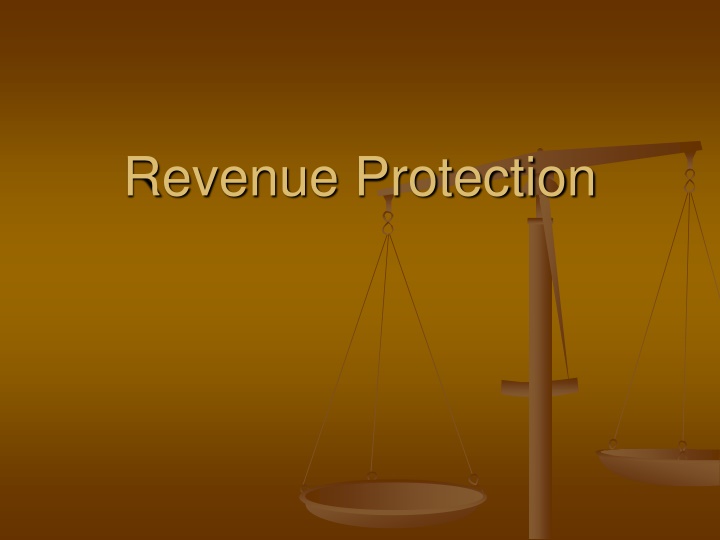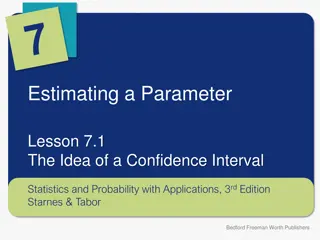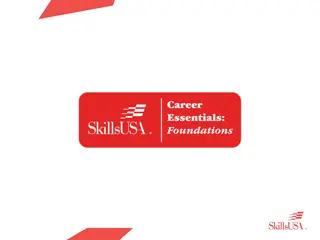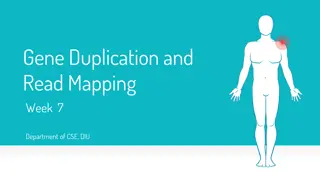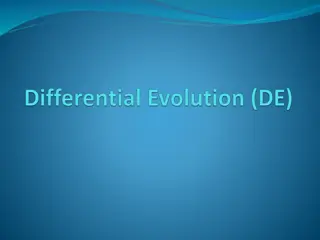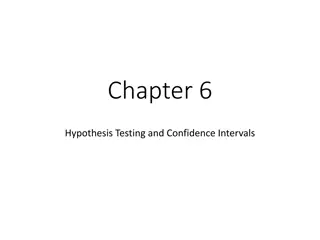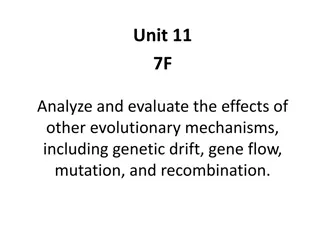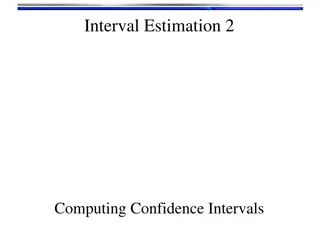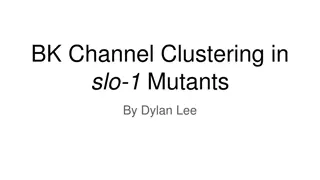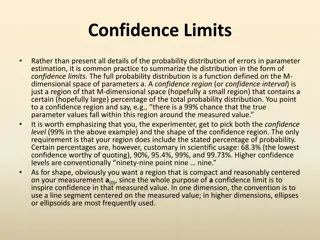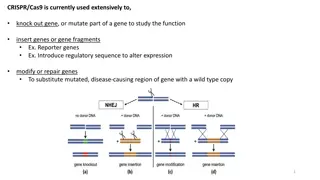Confidence-Based Testing Techniques and Mutation Testing
Structural and fault-based confidence testing methods, including coverage-based and fault-oriented techniques like fault seeding and mutation testing, are explained in detail. Mutation Testing is emphasized as a technique to measure test cases' adequacy in conjunction with traditional testing methods.
Download Presentation

Please find below an Image/Link to download the presentation.
The content on the website is provided AS IS for your information and personal use only. It may not be sold, licensed, or shared on other websites without obtaining consent from the author.If you encounter any issues during the download, it is possible that the publisher has removed the file from their server.
You are allowed to download the files provided on this website for personal or commercial use, subject to the condition that they are used lawfully. All files are the property of their respective owners.
The content on the website is provided AS IS for your information and personal use only. It may not be sold, licensed, or shared on other websites without obtaining consent from the author.
E N D
Presentation Transcript
What is Revenue Protection? Prevention Detection Investigation Billing Collection Civil and Criminal Prosecution Deterrence
Revenue Protection and Recovery Team Meter Readers and Field Investigators Meter Shop Customer Service Representatives Billing Section City Attorney s Office Law Enforcement Code Enforcement Officer Collections and Restoration Crew Water Conservation Other City Employees
The Mission Direct Compliance with State and Municipal Codes Unauthorized Use Theft Cross Connection and Backflow Prevention Water Waste Enforcement Drought Response Level Enforcement 1. 2. 3. 4. 5.
Unauthorized Use Metered Use Violations Theft Illegal Connections Cross Connection & Recycled Water Water Waste Mandatory Water Conservation
Metered Use Violations No Sign/No Customer Use Self Restoration After Shut Off for Non- Payment or Bounced Check Connection to Neighbor s Service Improper Use of Fire Service Misuse of Recycled Water
Water Theft Unmetered Illegal Connections Meter or Register Tampering Destruction of the Meter Register Meter in Backwards Switching or Removing Meter Stiff or Jumper in Meter Box Magnets on Register Fire Hydrants Without a Meter
Who Steals Water Home Owners and Tenants Business Owners Construction Site Contractors Water Truck Operators Just About Anyone
Why Steal Water Desperation Greed Revenge Convenience Avoid Mandated Use Reductions Avoid Allocation Penalties Fun
Illegal Connections Self Connections to Main Extending Service to Other Structures Moving Meters on Construction Sites Water Theft Cross-Connection Violations
Cross Connection Violations Cross Connection Cross Contamination Backflow Prevention Recycled Water State Mandated Penalties for the Water Provider Customer Notification Enforcement
Water Waste Water in Short Supply Costs Going Up Municipal Code Water Waste Illegal at All Times Drought Response Stages Increased Motivation to Steal Water
Water Waste Things to Look for: Over watering Landscape Leaks not repaired Washing down sidewalks, driveways, and other paved areas with a hose Washing cars without a shut-off nozzle Overfilling pools and spas Other prohibited water waste
Municipal Code SDMC Sec. 67. 803 , Water Waste Defined SDMC Sec. 67.3805-3804, Drought Response Level 1 Watch (Voluntary) Level 2 Alert (20% Reduction) Level 3 Critical (up to 40% Reduction) Level 4 Emergency (over 40% Reduction) Allocations (Level 2 Option) Variance Penalties
Responding to Violations Job of the Investigator Writing the Report Remedies
Revenue Protection Investigator Research Field Inspection Case Management Follow-up
Research Prior Investigations Computer Systems Billing Information Customer Information
Field Inspection What to look for Water Needs Water Sources Interviewing Documentation Preserving Evidence Photography Customer Service Media Politics
Case Management Organize Data Update Files and Records Secure and Protect Sensitive Information
Four Parts of Report Introduction Background Facts Conclusion
Types of Reports Interview Reports Summary Reports
Good Report Name the Source Document Every Conversation Just the Facts Quote the Witness Use Clear Language Spelling and Grammar Grandma Could Read and Understand
Follow-up Respond Timely to Requests for Information Thank Your Sources of Information and Assistance Let Folks Know What You Did Share the Final Outcome Think About Learning Opportunities
Remedies Compliance Communication and Education Administrative Citation ($100 to $1000) Notice of Violation Civil Penalties (Up to $2500 per Day) Civil and Criminal Prosecution Termination of Water Service
Revenue Protection Questions
Contact David Akin David F. Akin, Esq. Compliance and Metering Manager City of San Diego, Public Utilities 600 B Street, Suite 1200, MS 912 San Diego, California 92101-4589 Office Telephone (619) 533-4189 Email dakin@sandiego.gov
